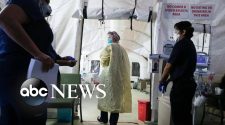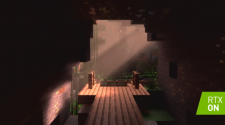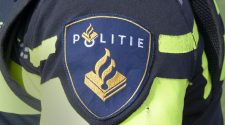- I tested Cadillac Super Cruise, the company’s fully-hands-free, semi-self-driving technology.
- Super Cruise can be used only on mapped highways, but Cadillac says it has covered 200,000 miles of roads in the US and Canada.
- I last sampled Super Cruise in 2017; the system has updates on the way and will be a key feature of the new Escalade SUV.
- The technology was the same as what I experienced three years ago, but I was able to subject Super Cruise to a pair of new challenges: the congested Garden State Parkway in New Jersey and rainy weather.
- Super Cruise performed almost flawlessly, offering only a single minor incident that the technology handled well.
- Visit Business Insider’s homepage for more stories.
When Cadillac debuted its fully hands-free, highway self-driving technology, called Super Cruise, in 2017 the company invited me to experience the system on a jaunt from New York City to Washington, DC.
I went in with an open mind and returned to NYC on Amtrak’s Acela with my mind blown. My Super Cruise-equipped Cadillac CT6 sedan couldn’t drive itself everywhere, but on I-95, it was essentially flawless.
I’ve tested most of the semi-self-driving technologies available in vehicles, including Tesla’s controversial Autopilot, and for me, there’s no question that Super Cruise is the state-of-the-art for highways.
GM is about to roll the system out on additional vehicles, including the all-new Escalade SUV and a new version of the all-electric Chevy Bolt EV.
On top of all that, Super Cruise is getting new features, including lane-changing and the ability to navigate off-ramps.
I wanted to get reacquainted with Super Cruise before its upgrade, so I revisited the tech in a 2019 CT6 Platinum, a $98,790 mega-sedan with a stonking V8 engine under the hood and the self-driving system included in the pre-option price of $95,795. (Depending on trim level, Super Cruise costs anywhere from $2,500 to just over $6,000 as an extra.)
Matthew DeBord/Insider
Sadly, I didn’t have a long road trip on my agenda. But I live in the northern New Jersey suburbs, with easy access to outstanding real-world proving grounds: I-80 and the Garden State Parkway.
Mother Nature threw a fresh challenge at the CT6, as well. My first test drive took place in a steady rainstorm — not a downpour, but one of those episodes of steady drizzle and squall that impact the Northeast from time to time. Nothing to keep you off the road, but difficult enough to keep you focused behind the wheel.
My second drive was all about near-perfect climatic conditions, but it also involved the Garden State Parkway and considerable traffic on a roadway that’s full of curves and toll booths and that tends to see a fair amount of maintenance, making for unpredictable driving.
Not full self-driving — but exceptionally good on the highway
Cadillac
Super Cruise, like Tesla Autopilot, isn’t truly a self-driving technology. Cadillac’s tech is essentially advanced cruise control plus situational automated steering. The carmaker has carefully defined its operating rules, starting with restricting the system to divided highways only (no oncoming traffic) where on ramp-and-off ramp access is extensive.
Beyond that, according to Caddy, the Super Cruise algorithm demands that adaptive cruise control is active; the forward collision system is set to alert and brake; the vehicle is on a limited-access freeway; camera or radar sensors are not covered, obstructed, or damaged; the system detects that the driver appears attentive; lane markings are clearly visible, not blurred by weather or other factors; and the “Teen Driver” feature isn’t on.
About that “driver appears attentive” part: Super Cruise uses a camera mounted on the steering column to monitor how attentive you’re being. It disengages if your eyes wander from the instrument cluster. So although it’s possible to engage in risky and distracting behaviors, such as texting or checking Instagram, the system will eventually bust you.
Matthew DeBord/Insider
Cadillac used lidar scanners to map over 200,000 miles of roads in the US and Canada, and says that Super Cruise has racked up six million total miles driven in the past three years. GM has said that it isn’t aware of a single accident during that period of time, but thus far Super Cruise has been available on just one vehicle, and CT6 has sold around 10,000 or fewer units annually since its launch in 2016.
I couldn’t fluster Super Cruise in my testing (and for the record, I violated Caddy’s warning not to use my phone while the system is engaged, so that I could take a few photos). I was particularly impressed with how the tech managed the rainy weather; it was one of those not-quite-heavy-rain scenarios where visibility was reduced and passing semis were kicking up spray.
I find this to be one of the toughest situations for a human to drive in, mainly because the conditions aren’t so bad that they compel other motorists to reduce their speeds or avoid a lot of lane changes. Meanwhile, it’s hard to see farther than half a dozen or so vehicles down the road, and depending on how cold it is, you can end up with foggy windows.
Another mostly flawless performance
Matthew DeBord/Insider
On top of all that, the sketchy highway infrastructure of north Jersey means that you go from nice, smooth asphalt one minute to pothole city the next, with sections of road repair cropping up frequently. Lanes markers can be crisply painted or completely faded, and in a storm, you never know when you’ll encounter patches of standing water.
Over a roughly 60-mile round-trip, Super Cruise performed nearly flawlessly. I say nearly because I had one instance of lane drift, but the system caught itself at the same moment I was reaching for the steering wheel.
Otherwise, I didn’t experience any disengagements on the route, which was mostly on I-80. I was prompted to take the wheel a few times, but at least one of those prompts was due to my snapping a photo of the green Super Cruise light bar on the steering wheel, in the process blocking the camera that was monitoring my attention.
Matthew DeBord/Insider
A few days later, I threw what I thought would be a tougher challenge at Super Cruise: another 60-mile run, this time down the Garden State Parkway in mid-afternoon, fast-moving traffic.
My previous trip might have entailed crummy weather, but for round two, the sun was shining and conditions were dry. However, the Parkway is a lot curvier than I-80, and it features numerous toll-booth exchanges and plenty of merging. Speed changes are also routine, from normal velocities to complete stops.
I expected Super Cruise to find itself in places where it could no longer safely operate, and sure enough, the system disengaged twice and also couldn’t locate itself around two toll areas. In my neck of the woods, I have to slow down from the posted speed limit to five or ten miles per hour to negotiate the tolls anyway, so I would have taken back the wheel regards.
Too bad about the Blackwing
Matthew DeBord/Insider
Beyond that, Super Cruise turned in another impeccable performance. I can’t overestimate how relaxing this is. The whole point of a fully-hands-free highway tech is to provide a window for drivers to reduce stress in a way that goes beyond old-school cruise control. Other semi-self-driving systems, including Tesla Autopilot, demand incessant monitoring, so for me they often increase a cognitive load that’s already very elevated, simply because you’re in a large, powerful vehicle, hurtling down the highway.
With Super Cruise, I put my hands in my lap, kept my eyes on the road, and chilled out. Over a few hundred miles, as I found when I drove down to DC in 2017, one arrives in a nice, mellow state. And coming off the Parkway in 2020, I definitely appreciated it.
In the end, the biggest challenge with Super Cruise had nothing to do with the self-driving technology but rather with the specs of the CT6 itself. The 4.2-liter, twin-turbo V8, dubbed “Blackwing,” is tuned to 500 horsepower and 574 pound-feet of torque, with a snappy ten-speed automatic transmission sending the oomph to an all-wheel-drive system that, under serious throttle, felt to me as though it were 100% rear-wheel-drive.
Regrettably, the Blackwing configuration has been discontinued, so the joyful noise the engine produces and the ferocious power delivery is going away. I found it to be so much fun that I didn’t entirely want to use Super Cruise. That’s a heady blend: a car that can drive itself, and that also demands you drive it. Near-perfection, in my book, and wearing a Cadillac badge.
















